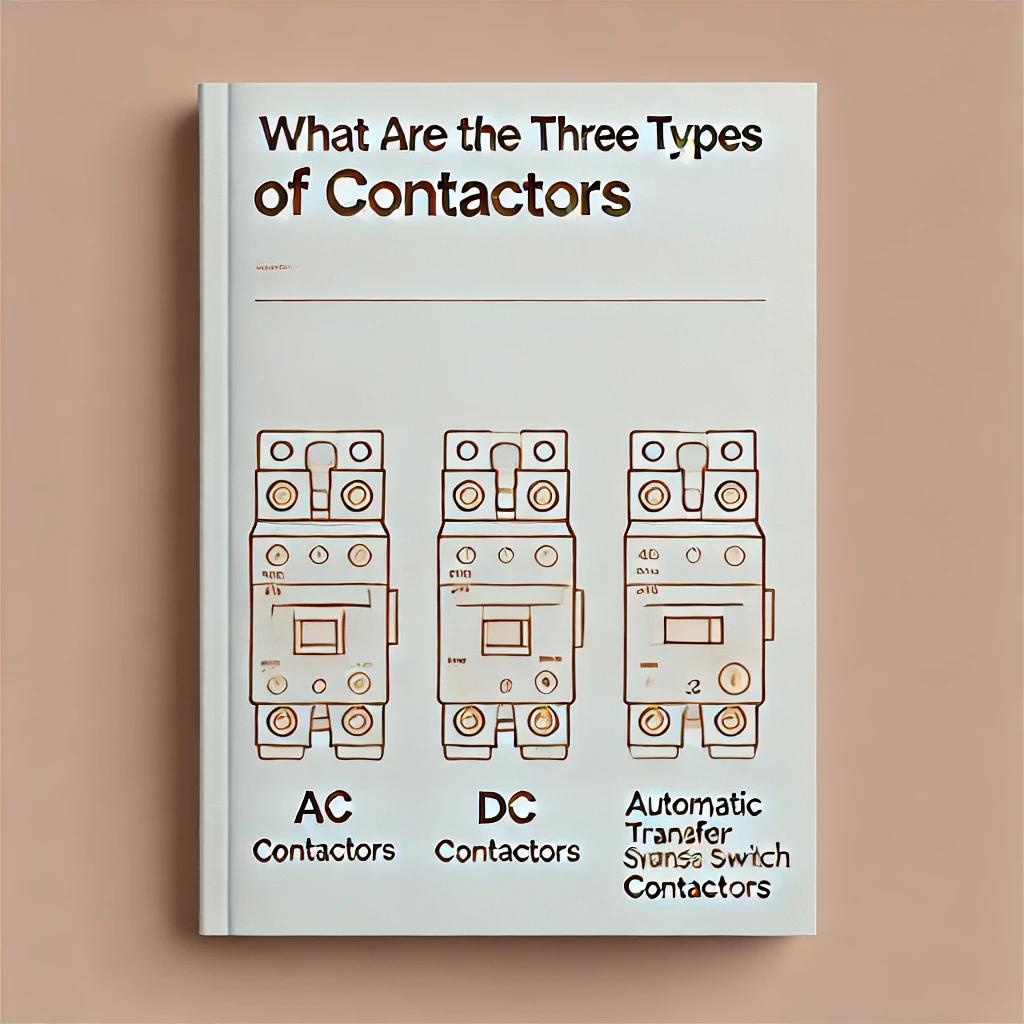Contactors are divided into three types: AC contactors, DC contactors, and automatic transfer switch (ATS) contactors. AC contactors are used to switch power in volatile environments, such as motor and lighting control. DC contactors are mainly used to control the DC power supply of vehicles and vessels, such as DC motors and photovoltaic systems. Because of their special arc extinguishing function, they are specially designed for switching between solar arrays or battery configurations in very low voltage environments, working like automatic devices without motor speed controllers. When the power goes out, ATS contactors are designed to rapidly switch to backup power, which is very important in places like hospitals and data centers.

AC Contactor
An AC contactor is used for remote connection and disconnection of circuits; it consists of the following elements: an electromagnetic system (coil and iron core), a contact system, and an arc extinguishing device. The common coil voltage for AC contactors is 220V, which can also be used as a control coil, and the current carrying capacity is usually divided into two types: contact ranges from 9A to hundreds of amperes. For example, Schneider Electric's LC1-D series AC contactors have been widely applied in industrial control systems.
During the operation of an AC contactor, when the coil is energized, the iron core attracts and drives the movable contact arm to move toward the fixed contact to connect in a closed path. When the coil loses power, its magnetic field collapses, and under the action of a return spring pushing on the iron core, the movable contact and the static contact significantly separate and open the circuit. For instance, in motor control, the maximum operating frequency of AC contactors is 1200 times per hour to provide reliable start-stop functions for electric motors.
AC contactors are used to remotely turn on and off electrical circuits, similar to relays but designed for high current applications, and can be controlled by automation control systems or simple manual operation. They are widely applied in the service systems of industrial loads such as vacuum cleaners, air conditioners, motor starting and stopping, and lighting equipment. Another reason for using AC contactors is that in large industrial equipment, using these components can greatly improve the automation level and safety of the equipment. For example, a steel mill may use many AC contactors to control production equipment hundreds of times to achieve step-down and application linkage purposes.
DC Contactor
A DC contactor has the same basic shape as an AC contactor but with fewer switching circuit connections. The rated current of DC contactor contacts is generally between 30A and 3000A, and the voltage level can reach up to 1500V. For example, TE Connectivity's EV200 series DC contactors have a continuous carrying capacity of 10-500A on their main power poles, widely used in electric vehicles (EV) and energy storage systems.
A DC contactor and an AC contactor have the same working principle, which is to control whether contacts are connected or disconnected through the attraction and release of electromagnetic coils. But because DC has no zero crossing, the arc extinguishing design for DC contactors is special, mostly adopting magnetic blowout or oil-immersed arc extinction forms. For example, in photovoltaic power generation systems, the reliability of DC contactors directly affects a series of issues such as efficiency and safety.
The main applications of DC contactors are used in the control systems of most materials—from DC motors and substations to rail transit, solar photovoltaic systems (wind power), electric vehicle charging stations, and other places that require DC power. For example, in photovoltaic power generation systems or a large PV power station, hundreds of DC contactors may be used to implement effective current control and distribution among different solar components to avoid system overload or failure.
Automatic Transfer Switch Contactor
An automatic transfer switch contactor is used to automatically switch between two different power sources. It mainly consists of a controller, a bidirectional contactor, and a mechanical interlock. The switching time of an ATS is about 100 milliseconds to a few seconds, so critical loads can switch simultaneously in the event of power loss or failure. The ABB OT series automatic transfer switch, for instance, has a switching time as low as 150 milliseconds, and can be used in data centers and hospitals.
The control principle of the ATS contactor is: when the input AC main power supply fails, by detecting signal changes (such as frequency or voltage if it is a mechanical sensor), the controller turns on the backup power contactor and connects the standby output generator to the load side, meanwhile turning off the main contactor to avoid a short-term blackout causing partial work failures. The system will automatically switch back to the main supply when the primary power is restored. For example, in a bank's data center, using an ATS contactor ensures that the power supply can quickly switch to backup power when there is a problem with the main circuit, ensuring banking continuity.
ATS contactors are widely applied in hospitals, data centers, communication base stations, banks, airports, and other important fields that require 24-hour power to ensure the smooth operation of electromechanical products. For example, a large hospital may use dozens of ATS contactors to quickly provide power stability to operating rooms, ICUs, and other critical departments.
